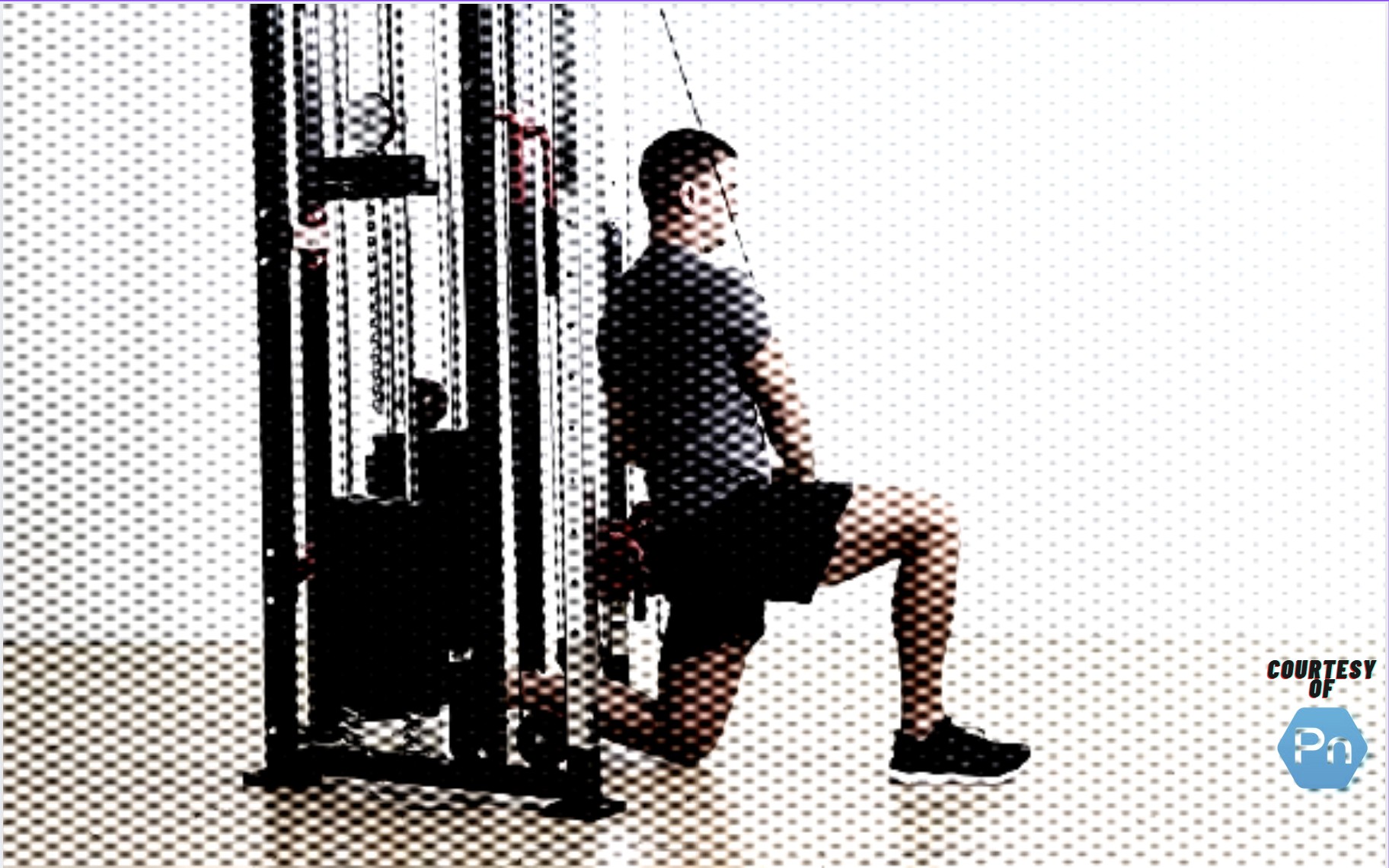(And Why Your Training Isn’t Complete Without It)
Imagine an exercise that harnesses the raw potential of your core, enhances rotational strength for sports, and carves a torso worthy of a Greek statue—all while teaching your body to move with the balance and stability of a panther. That’s the Half-Kneeling Cable Chop. If you’re a lifter, athlete, or individual chasing functional aesthetics, this movement isn’t just an exercise—it’s a comprehensive upgrade to your workout routine. But let’s be clear: this isn’t for the half-committed. Approaching it without intention is like swinging a samurai sword in the dark. Here’s how to wield it right.
What the Hell Is a Half-Kneeling Cable Chop?
Picture this: You’re kneeling on one knee, cable machine at your side, driving resistance diagonally across your body with controlled chaos. The half-kneeling position forces your core, glutes, and shoulders into a brutal tango of stability and power. As Eugene Thong, CSCS, puts it: “This isn’t just another ab move. It’s a masterclass in teaching your body to resist rotation while producing force—critical for everything from throwing a punch to hoisting groceries.”

Who It’s For (And Who Should Walk Away)
DO THIS IF YOU:
- Crave a stronger, more stable core that translates to sports, lifting, or daily life.
- Want obliques that look etched by a sculptor.
- Are stuck in a functional fitness plateau.
SKIP IT IF YOU:
- Have unresolved knee or lower-back issues (consult a pro first).
- Think “core training” means endless crunches.
- Lack the patience to master proper form.
Pros vs. Cons: The Unvarnished Truth
| Pros | Cons |
|---|---|
| Targets obliques, glutes, shoulders | Requires cable machine access |
| Improves rotational power for sports | Steep learning curve for form |
| Enhances balance + proprioception | Not ideal for pure hypertrophy |
The Science of Controlled Chaos
The magic lies in dissociation: Your hips and shoulders move independently while your core orchestrates stability. Charles Damiano, B.S. Clinical Nutrition, explains: “By resisting the cable’s pull, you’re strengthening the deep stabilizers most exercises ignore. That’s how you build a bulletproof midsection.”
Want to level up? Try performing it on a wobble board or foam pad. This introduces instability, frying your proprioception and turning the move into a neuro-muscular fire drill.
Step-by-Step: How to Chop Like a Pro
- Set Up: Attach a handle to a cable machine at chest height.
- Kneel: Drop into a half-kneeling stance (knee under hip, front foot flat).
- Grip: Grab the handle with both hands, arms extended.
- Chop: Rotate your torso away from the machine, driving the handle diagonally across your body.
- Control: Fight the urge to jerk. Move like you’re slicing through molasses.
Make It Your Own: Progressions & Modifications
- Beginner: Reduce weight. Focus on *slow, 4-second reps*.
- Advanced: Add a pause at the end-range or use a resistance band for variable tension.
- Sport-Specific: Pair it with a medicine ball throw for explosive power.
The Emotional Toehold: Why This Matters
This isn’t just about “getting shredded.” It’s about reclaiming the kind of primal strength that lets you play harder, lift heavier, and live untethered. Every rep is a declaration: You refuse to be fragile.
Chopping Through the Noise: Your Most Uncommon Half-Kneeling Cable Chop Questions, Answered
A: Absolutely—though indirectly. The exercise trains anticipatory stability, priming your nervous system to react to destabilizing forces. In combat scenarios, where unpredictable torque and off-angle strikes rule, the chop’s demand for controlled resistance sharpens your ability to stay rooted while generating counter-rotation. Eugene Thong notes: “It’s not about mimicking a punch. It’s about wiring your core to act as a shock absorber, so when chaos hits, your body defaults to stability, not panic.”
A: Yes—if you’re strategic. The half-kneeling position exposes imbalances (e.g., one hip tighter than the other) by isolating each side. For desk warriors, the rotational component counteracts the spinal “C-curve” from hunching over screens. Charles Damiano adds: “Most posture fixes are passive stretches. This is active rebellion: rebuilding strength in the positions your body’s forgotten.” Focus on slower tempos and lighter weights to retrain alignment before loading.
A: Grip is the silent killer in strongman events. The chop’s diagonal path forces a crushing, rotating grip on the handle—similar to holding a Atlas stone or yoke. Over time, it builds endurance in the forearms and teaches the hands to stay locked under fatigue. One strongman coach quipped: “You want calluses that laugh at sandpaper? Stop doing static holds and start chopping.”
A: Surprisingly, yes. The half-kneeling stance compresses the diaphragm on the kneeling side, demanding deeper, more intentional breathing to maintain ribcage alignment. For runners or cyclists, this translates to oxygen efficiency under load. Try this: Exhale forcefully during the chop’s rotation. It mimics the breath control needed uphill or mid-sprint, turning the exercise into a stealth cardio drill for your respiratory muscles.
Final Rep
The Half-Kneeling Cable Chop isn’t a party trick. It’s a testament to what happens when science meets sweat. Incorporate it with precision, and you’ll unlock a stronger, more capable version of yourself—one chop at a time.
NEXT STEPS:
